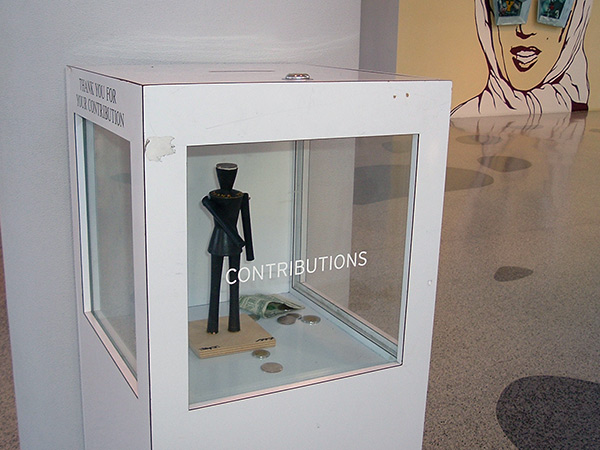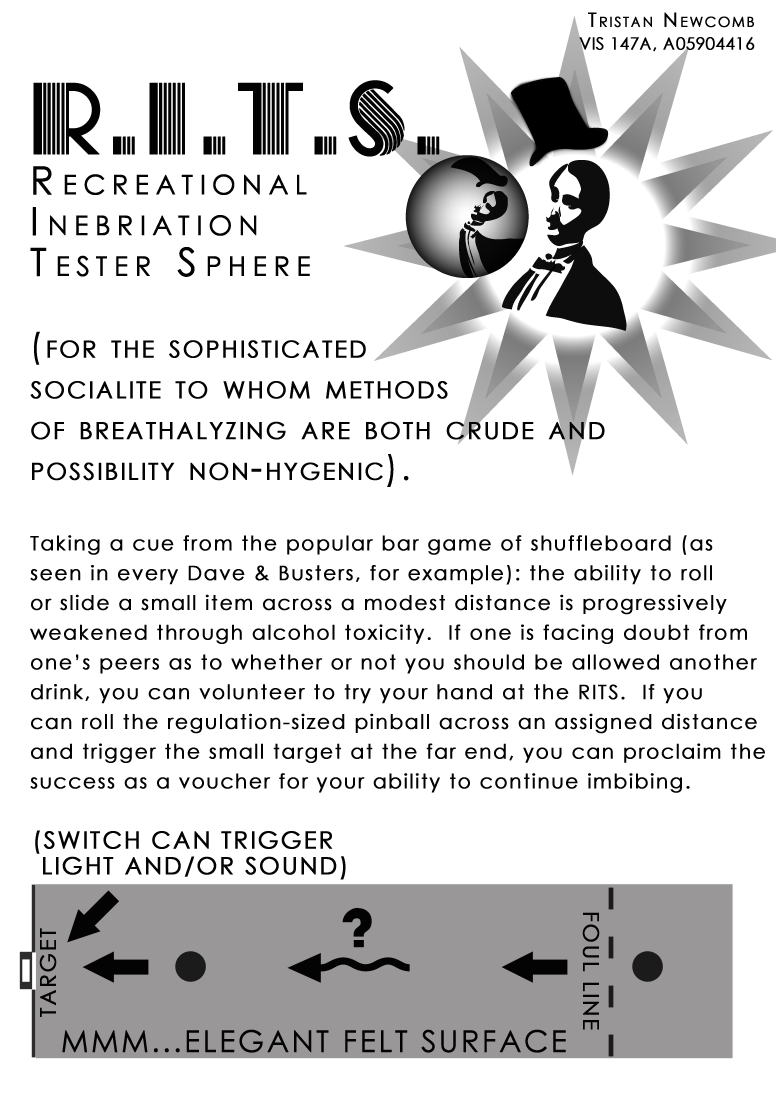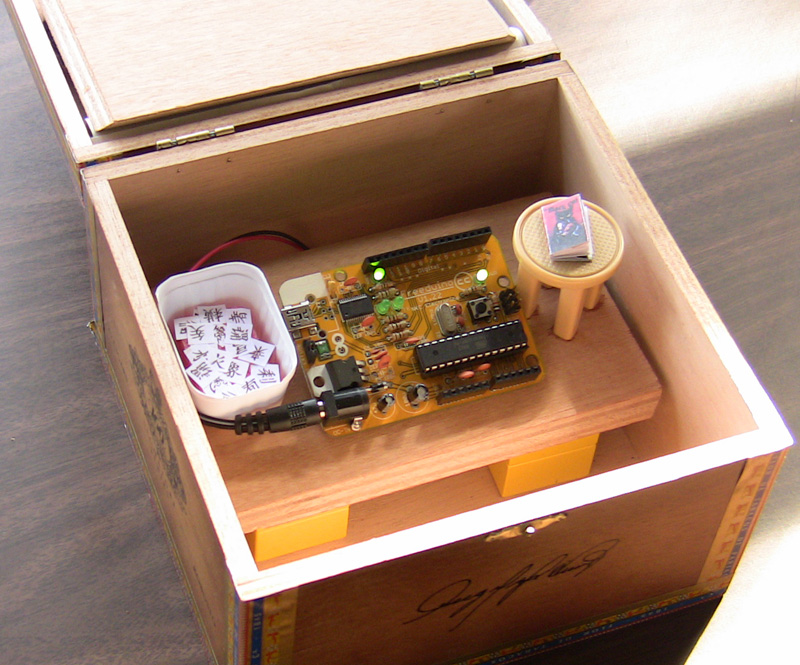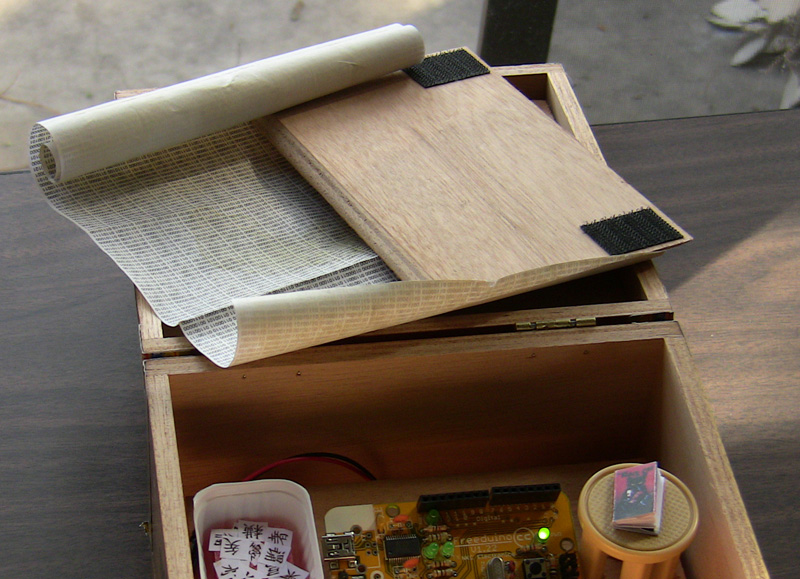Difference between revisions of "Students/Tristan Newcomb"
Moonmuppet2 (talk | contribs) |
|||
| (5 intermediate revisions by 2 users not shown) | |||
| Line 3: | Line 3: | ||
Luckily, I met a couple of undergrad folks who are also dead serious about making feature-length indie movie projects, and we've managed a couple so far, with two others on the way to getting done by summer: http://www.lumalin.com | Luckily, I met a couple of undergrad folks who are also dead serious about making feature-length indie movie projects, and we've managed a couple so far, with two others on the way to getting done by summer: http://www.lumalin.com | ||
| − | Haven't had | + | Haven't had any eletronics experience; engineering-illiterate is probably a fair way to put it. I'm assuming my attempts at the electrical bits will end in tragedy.... |
| + | |||
| + | [[Image:donationbox.jpg]] | ||
| + | [[Image:flailing-man.jpg]] | ||
| + | [[Image:pump-buttons.jpg]] | ||
| + | [[Image:Sat-Dish.jpg]] | ||
| + | [[Image:soda-vend.jpg]] | ||
| + | |||
| + | |||
| + | ==Midterm Project Proposal== | ||
| + | [[Image:RITS.png]] | ||
| + | |||
| + | ==Final Project== | ||
| + | The A.I. Preventative Arduino: | ||
| + | |||
| + | * CPU is perpetually running a clear summation of John Searle’s argument against strong A.I. and machine consciousness – in a sense, it is a booby trap for our nefarious post- Singularity computer overlords of the future, a “landmine” of refutation to the idea of machine superiority, since Searle’s argument shows that symbol manipulation can never be the same as conscious comprehension. Every blink of the little embedded light in pin 13 indicates that the program has cycled through the entire argument once. | ||
| + | |||
| + | * Or this might become a religious object for the computer overlords, much in the same way that the slaughter of Jesus on the crucifix became an icon of “victory” for Christianity, the Chinese Room setting could be a similar symbol of “victory” for the computer overlords, i.e. a setback that they have triumphantly overcome. By my holding it, I may be spared, because killing me would cause me to possibly drop it, damaging the original icon. Even in my sleep, I could position it on my chest so that any death spasms might send it crashing to the floor. | ||
| + | |||
| + | * Like any religious object of the Dan Brown variety, mine has a secret compartment, hiding a scroll (stained with tea for that authentic hidden-scroll look) of that same Searle argument translated into binary code. This is in case the nefarious computer overlords of the future don’t have any more need for physical interfaces and wouldn’t be plugging in to any random USB ports they find – in which case, a small band of future humans will need to infiltrate the lair of the MCP (Master Control Program) and type in the Searle argument directly. Since the nefarious computers will have disabled all physical interfaces (because those are only of use to humans), this small band will need to construct their own interface, and something with just two buttons is really all one can expect of them, since they’ll be dodging lasers and security cameras and all that. Also, if this is made into a miniseries in the further future, the binary version of the argument is so many 1’s and 0’s that they can make an entire episode out of just the inputting of this code, substantially reducing the production budget. | ||
| + | |||
| + | [[Image:SearleBox1.jpg]] | ||
| + | [[Image:SearleBox2.jpg]] | ||
| + | |||
| + | CODE: | ||
| + | |||
| + | int ledPin = 13; // LED connected to digital pin 13 | ||
| + | |||
| + | // The setup() method runs once, when the sketch starts | ||
| + | |||
| + | void setup() { | ||
| + | // initialize the digital pin as an output: | ||
| + | pinMode(ledPin, OUTPUT); | ||
| + | } | ||
| + | |||
| + | // the loop() method runs over and over again, | ||
| + | // as long as the Arduino has power | ||
| + | |||
| + | void loop() | ||
| + | { | ||
| + | digitalWrite(ledPin, HIGH); | ||
| + | delay(150); | ||
| + | /* | ||
| + | |||
| + | Searle's thought experiment begins with this hypothetical premise: suppose that artificial intelligence research has succeeded in constructing a computer that behaves as if it understands Chinese. It takes Chinese characters as input and, by following the instructions of a computer program, produces other Chinese characters, which it presents as output. Suppose, says Searle, that this computer performs its task so convincingly that it comfortably passes the Turing test: it convinces a human Chinese speaker that the program is itself a human Chinese speaker. To all of the questions that the human asks, it makes appropriate responses, such that any Chinese speaker would be convinced that he or she is talking to another Chinese-speaking human being. | ||
| + | |||
| + | Some proponents of artificial intelligence would conclude that the computer "understands" Chinese. This conclusion, a position he refers to as strong AI, is the target of Searle's argument. | ||
| + | |||
| + | Searle then asks the reader to suppose that he is in a closed room and that he has a book with an English version of the aforementioned computer program, along with sufficient paper, pencils, erasers and filing cabinets. He can receive Chinese characters (perhaps through a slot in the door), process them according to the program's instructions, and produce Chinese characters as output. As the computer had passed the Turing test this way, it is fair, says Searle, to deduce that the human operator will be able to do so as well, simply by running the program manually. | ||
| + | |||
| + | Searle asserts that there is no essential difference between the role the computer plays in the first case and the role the human operator plays in the latter. Each is simply following a program, step-by-step, which simulates intelligent behavior. And yet, Searle points out, the human operator does not understand a word of Chinese. Since it is obvious that he does not understand Chinese, Searle argues, we must infer that the computer does not understand Chinese either. | ||
| + | |||
| + | Searle argues that without "understanding" (what philosophers call "intentionality"), we cannot describe what the machine is doing as "thinking". Because it does not think, it does not have a "mind" in anything like the normal sense of the word, according to Searle. Therefore, he concludes, "strong AI" is mistaken. | ||
| + | */ | ||
| + | digitalWrite(ledPin, LOW); | ||
| + | delay(600); | ||
| + | } | ||
Latest revision as of 22:39, 19 March 2010
Over the last few years, I've gotten to unleash a dozen-or-so stealth theater pieces in lower-div classes, where I pretend to be a project developer from a huge video game company (usually Electronic Arts), coming to give a guest lecture to students about the glories (and perils) of gaming dev. These performance pieces are scripted to go horribly wrong, but the students are not told in advance that the whole thing's a cruel construct. Ars Technica ended up doing an article on it: http://is.gd/6atEc
Luckily, I met a couple of undergrad folks who are also dead serious about making feature-length indie movie projects, and we've managed a couple so far, with two others on the way to getting done by summer: http://www.lumalin.com
Haven't had any eletronics experience; engineering-illiterate is probably a fair way to put it. I'm assuming my attempts at the electrical bits will end in tragedy....
Midterm Project Proposal
Final Project
The A.I. Preventative Arduino:
- CPU is perpetually running a clear summation of John Searle’s argument against strong A.I. and machine consciousness – in a sense, it is a booby trap for our nefarious post- Singularity computer overlords of the future, a “landmine” of refutation to the idea of machine superiority, since Searle’s argument shows that symbol manipulation can never be the same as conscious comprehension. Every blink of the little embedded light in pin 13 indicates that the program has cycled through the entire argument once.
- Or this might become a religious object for the computer overlords, much in the same way that the slaughter of Jesus on the crucifix became an icon of “victory” for Christianity, the Chinese Room setting could be a similar symbol of “victory” for the computer overlords, i.e. a setback that they have triumphantly overcome. By my holding it, I may be spared, because killing me would cause me to possibly drop it, damaging the original icon. Even in my sleep, I could position it on my chest so that any death spasms might send it crashing to the floor.
- Like any religious object of the Dan Brown variety, mine has a secret compartment, hiding a scroll (stained with tea for that authentic hidden-scroll look) of that same Searle argument translated into binary code. This is in case the nefarious computer overlords of the future don’t have any more need for physical interfaces and wouldn’t be plugging in to any random USB ports they find – in which case, a small band of future humans will need to infiltrate the lair of the MCP (Master Control Program) and type in the Searle argument directly. Since the nefarious computers will have disabled all physical interfaces (because those are only of use to humans), this small band will need to construct their own interface, and something with just two buttons is really all one can expect of them, since they’ll be dodging lasers and security cameras and all that. Also, if this is made into a miniseries in the further future, the binary version of the argument is so many 1’s and 0’s that they can make an entire episode out of just the inputting of this code, substantially reducing the production budget.
CODE:
int ledPin = 13; // LED connected to digital pin 13
// The setup() method runs once, when the sketch starts
void setup() {
// initialize the digital pin as an output: pinMode(ledPin, OUTPUT);
}
// the loop() method runs over and over again, // as long as the Arduino has power
void loop() {
digitalWrite(ledPin, HIGH); delay(150); /*
Searle's thought experiment begins with this hypothetical premise: suppose that artificial intelligence research has succeeded in constructing a computer that behaves as if it understands Chinese. It takes Chinese characters as input and, by following the instructions of a computer program, produces other Chinese characters, which it presents as output. Suppose, says Searle, that this computer performs its task so convincingly that it comfortably passes the Turing test: it convinces a human Chinese speaker that the program is itself a human Chinese speaker. To all of the questions that the human asks, it makes appropriate responses, such that any Chinese speaker would be convinced that he or she is talking to another Chinese-speaking human being.
Some proponents of artificial intelligence would conclude that the computer "understands" Chinese. This conclusion, a position he refers to as strong AI, is the target of Searle's argument.
Searle then asks the reader to suppose that he is in a closed room and that he has a book with an English version of the aforementioned computer program, along with sufficient paper, pencils, erasers and filing cabinets. He can receive Chinese characters (perhaps through a slot in the door), process them according to the program's instructions, and produce Chinese characters as output. As the computer had passed the Turing test this way, it is fair, says Searle, to deduce that the human operator will be able to do so as well, simply by running the program manually.
Searle asserts that there is no essential difference between the role the computer plays in the first case and the role the human operator plays in the latter. Each is simply following a program, step-by-step, which simulates intelligent behavior. And yet, Searle points out, the human operator does not understand a word of Chinese. Since it is obvious that he does not understand Chinese, Searle argues, we must infer that the computer does not understand Chinese either.
Searle argues that without "understanding" (what philosophers call "intentionality"), we cannot describe what the machine is doing as "thinking". Because it does not think, it does not have a "mind" in anything like the normal sense of the word, according to Searle. Therefore, he concludes, "strong AI" is mistaken.
*/ digitalWrite(ledPin, LOW); delay(600);
}







